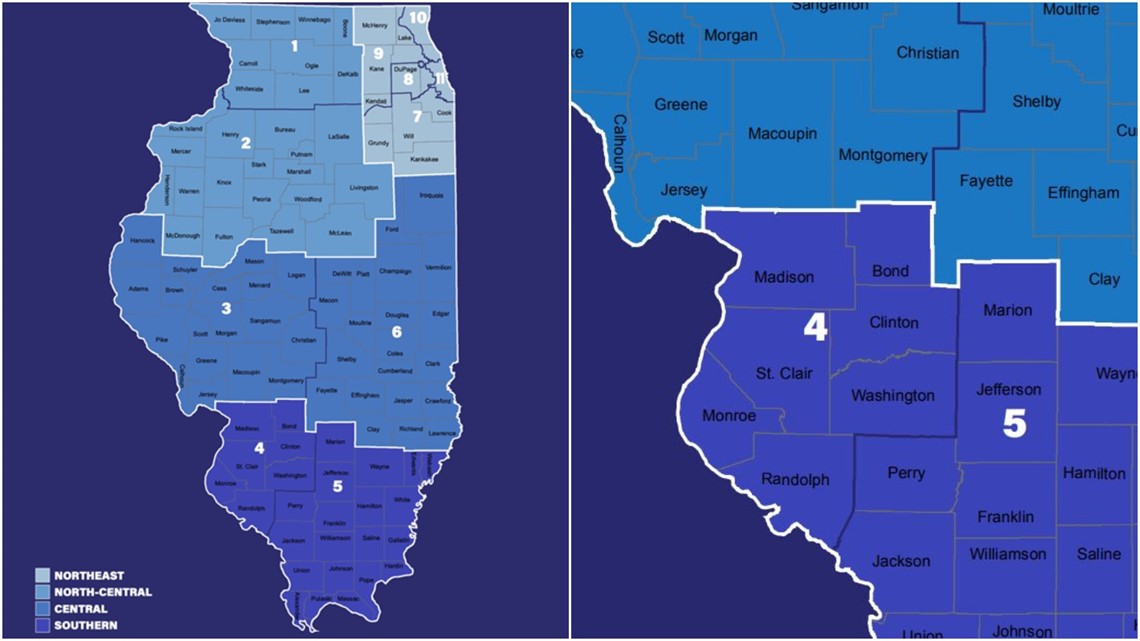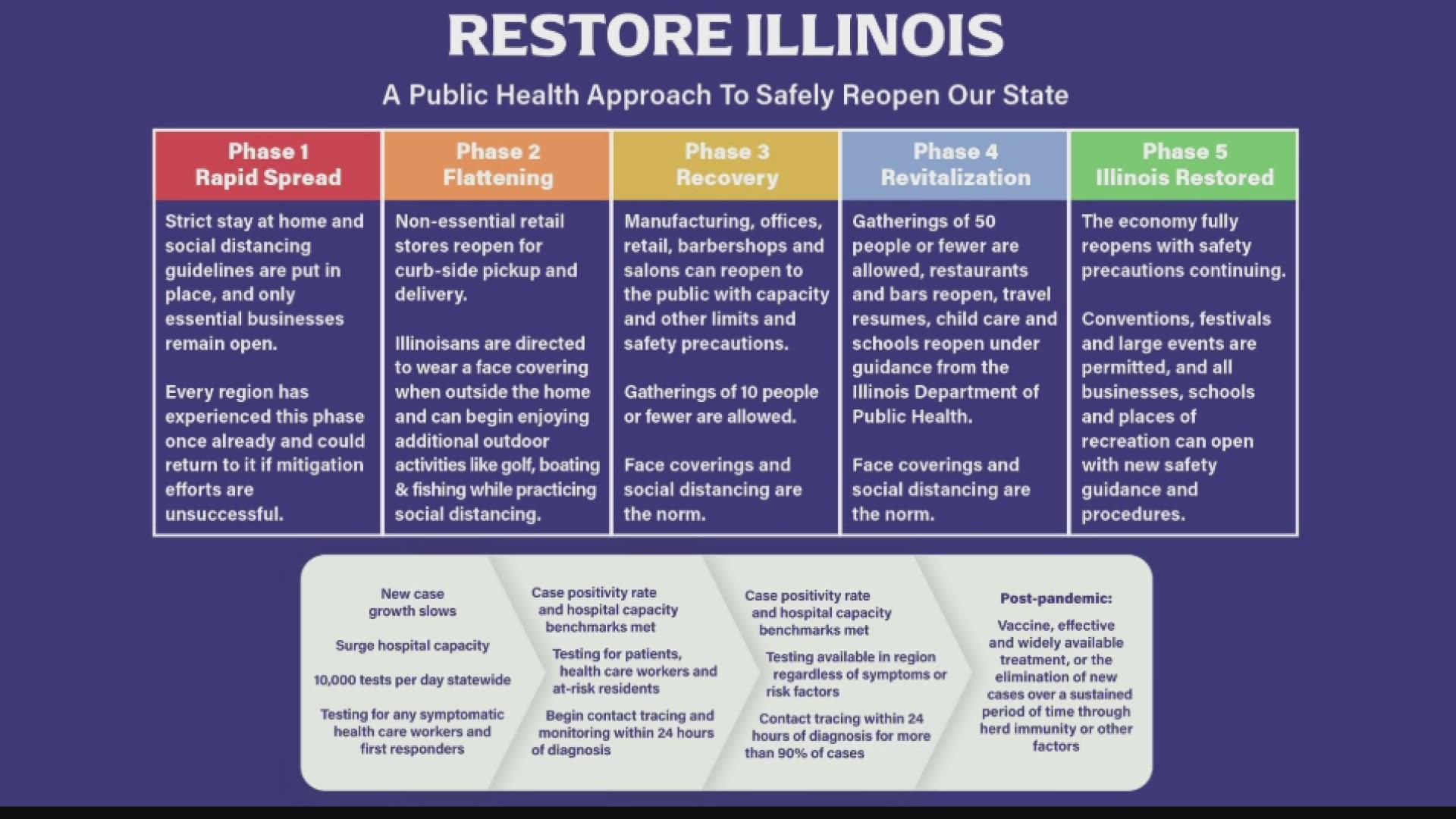CHICAGO — Illinois Governor JB Pritzker has announced a regional five-step plan to begin reopening the state in a safe way to save lives and livelihoods.
The governor said “Restore Illinois” was developed using health care data to guide officials on when it’s best to reopen businesses, schools and recreational activities during each phase of the plan.
"Restore Illinois is a public health plan to safely reintroduce the parts of our lives that have been put on hold in our fight against COVID-19,” Gov. Pritzker said. “This is also a data-driven plan that operates on a region-by-region basis, a recognition that reality on the ground looks different in different areas of our state."
The state said the plan is based on regional health care availability and “recognizes the distinct impact COVID-19 has had on different regions of our state.”
Instead of a whole-state approach to reopening, this will allow certain parts of the state to open at faster rates than other parts, given COVID-19 cases, testing and hospital availability.
The Illinois Department of Public Health already has 11 “Emergency Medical Services Regions” it uses. The state will use those and combine them into four overall regions: Northeast Illinois, North-Central Illinois, Central Illinois and Southern Illinois. Parts of the Metro East are in the Central Illinois and Southern Illinois regions.


Illinois health officials said this initial plan can and will be updated as research and new information develops. The state also said health data will determine when a region can move to the next phase and also whether an area needs to return to a prior phase.
The five phases of reopening each health region are:
Phase 1 – Rapid Spread: The rate of infection among those tested and the number of patients admitted to the hospital is high or rapidly increasing. Strict stay at home and social distancing guidelines are put in place and only essential businesses remain open. Every region has experienced this phase once already and could return to it if mitigation efforts are unsuccessful.
Phase 2 – Flattening: The rate of infection among those tested and the number of patients admitted to the hospital beds and ICU beds increases at an ever slower rate, moving toward a flat and even a downward trajectory. Non-essential retail stores reopen for curb-side pickup and delivery. Illinoisans are directed to wear a face covering when outside the home, and can begin enjoying additional outdoor activities like golf, boating and fishing while practicing social distancing. To varying degrees, every region is experiencing flattening as of early May.
Phase 3 – Recovery: The rate of infection among those tested, the number of patients admitted to the hospital, and the number of patients needing ICU beds is stable or declining. Manufacturing, offices, retail, barbershops and salons can reopen to the public with capacity and other limits and safety precautions. All gatherings limited to 10 or fewer people are allowed. Face coverings and social distancing are the norm.
Phase 4 – Revitalization: The rate of infection among those tested and the number of patients admitted to the hospital continues to decline. All gatherings of up to 50 people are allowed, restaurants and bars reopen, travel resumes, child care and schools reopen under guidance from the IDPH. Face coverings and social distancing are the norm.
Phase 5 – Illinois Restored: With a vaccine or highly effective treatment widely available or the elimination of any new cases over a sustained period, the economy fully reopens with safety precautions continuing. Conventions, festivals and large events are permitted, and all businesses, schools, and places of recreation can open with new safety guidance and procedures in place reflecting the lessons learned during the COVID-19 pandemic.
You can read the state's full Restore Illinois plan here. And you can watch Gov. Pritzker's announcement about the plan by clicking play on the video below.
On Tuesday, Illinois reported 2,122 new confirmed COVID-19 cases and 176 new deaths.
There have been 65,962 total confirmed COVID-19 cases and 2,838 deaths, according to the Illinois Department of Health. A total of 346,286 tests have been performed.
You can see a county-by-county breakdown of confirmed COVID-19 cases in Illinois with our interactive map below:
This is a developing story and will be updated.

